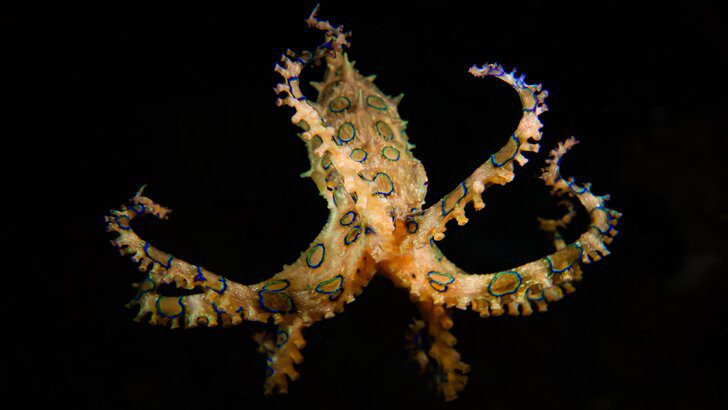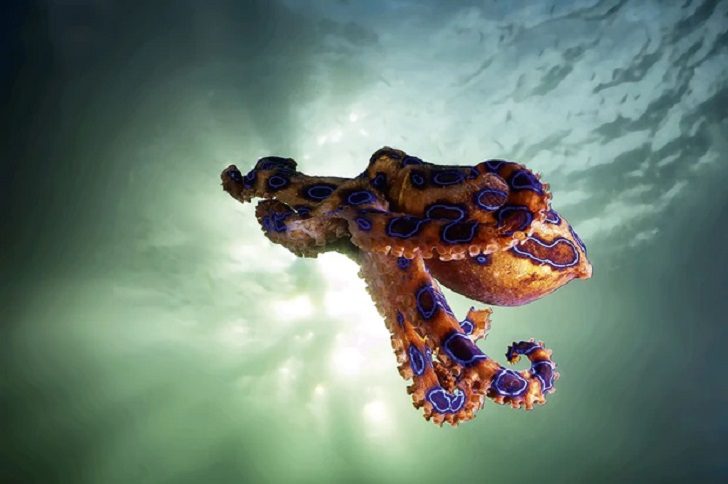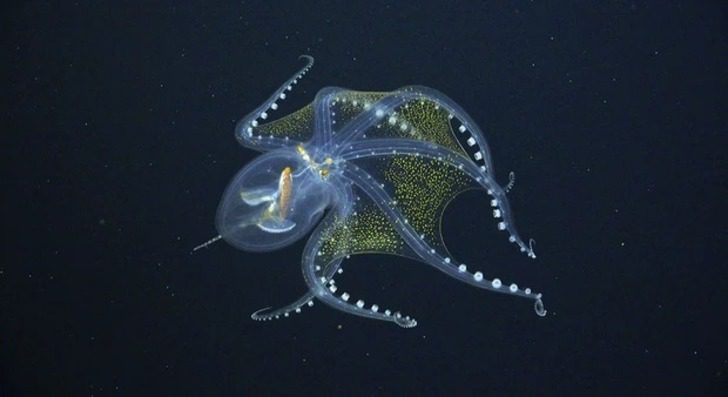Ever noticed how people always keep mentioning “the earth is full of surprises”, “nature and wildlife are filled with mind-boggling facts”? Well, if you find those claims hollow, this post will change your perspective…guaranteed!
One of the most intriguing forms of life on Earth, one that is extremely mysterious yet ofter overlooked, is the Octopus. Octopuses are sea animals known for their bulging eyes, rounded bodies, and eight long arms. But that’s not it! The interesting part is that they have three hearts, bleed blue, and impeccable intelligence that can easily outsmart other spineless water animals. Now, won’t you agree that there’s nothing quite like an octopus?

Kris-Mikael Krister/Unsplash | Octopuses are highly interesting sea animals that have three hearts, bleed blue, and have impeccable intelligence
On that note, here are a bunch of magnificent photos of some cephalopods you might’ve never seen before.
#1 - The blue-ringed octopus
They’re known for being the world’s most dangerous and deadliest water animals. Blue-ringed octopuses are generally quite docile and spend most of their life hiding under the rubble and shells. There are almost 4 to 10 species in the hapalochlaena genus, found in the shallow seas of Australia to Japan. Mostly they’re all small in size, not bigger than a handspan, with 60 bright blue rings on their bodies that act as a flash warning whenever they sense danger.
The blue rings on their bodies contain multilayer reflectors arranged in order to emit blue-green light, whose flashing is controlled by the muscles. Every time the octopus is about to deploy its deadly defensive bite, it tends to flash this warning light.

© Getty Images | Blue-ringed octopuses are generally quite docile and spend most of their life hiding under the rubble and shells
#2 - Glass octopus
Found in the mysterious deep waters at about 1000 meters deep, with transparent shining gelatinous bodies, glass octopuses are some of the most elusive, discrete, and the least studied animals in the ocean. They’re usually spotted in the tropical and subtropical waters all around the world, mainly near humongous underwater mountains called seamounts.

© Schmidt Ocean Institute | The one in this picture has golden flecks that can be seen between the octopus’s arms called chromatophores
The one in this picture has golden flecks that can be seen between the octopus’s arms, called chromatophores. The function of these flecks is not really defined in the dark waters, but it’s believed that it’s a feature they might’ve inherited from their ancestors.
#3 - Coconut octopus
Undoubtedly, octopuses are some of the most intelligent and smartest invertebrates. They have around 500 million neurons, compared to 18,000 for a sea slug and 100,000 for a lobster. And if you don’t believe that, allow us to take you back to a viral video posted a while back where an octopus was seen gliding across the seabed as it carried half an empty coconut shell! Later, it found another shell, assembled the two together, and climbed inside it as a protective shelter. Isn’t that truly crazy?
It’s believed that roughly half of an octopus’s neurons are located in a doughnut-shaped structure on its head, and the rest of them are located in the arms. So, does that mean an octopus is capable of thinking from its arm? We guess it’ll be best to hold onto some scientific research before answering that.








